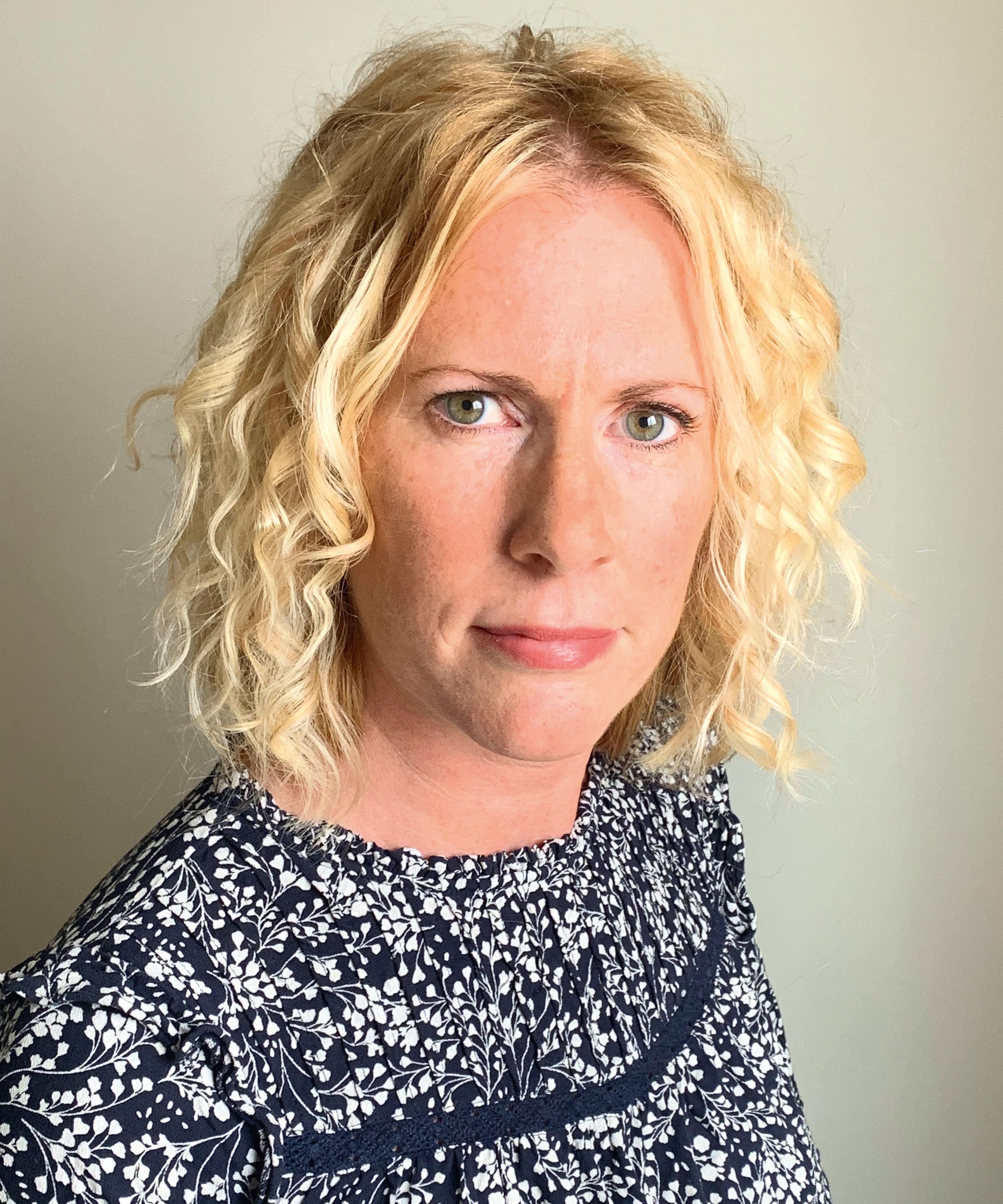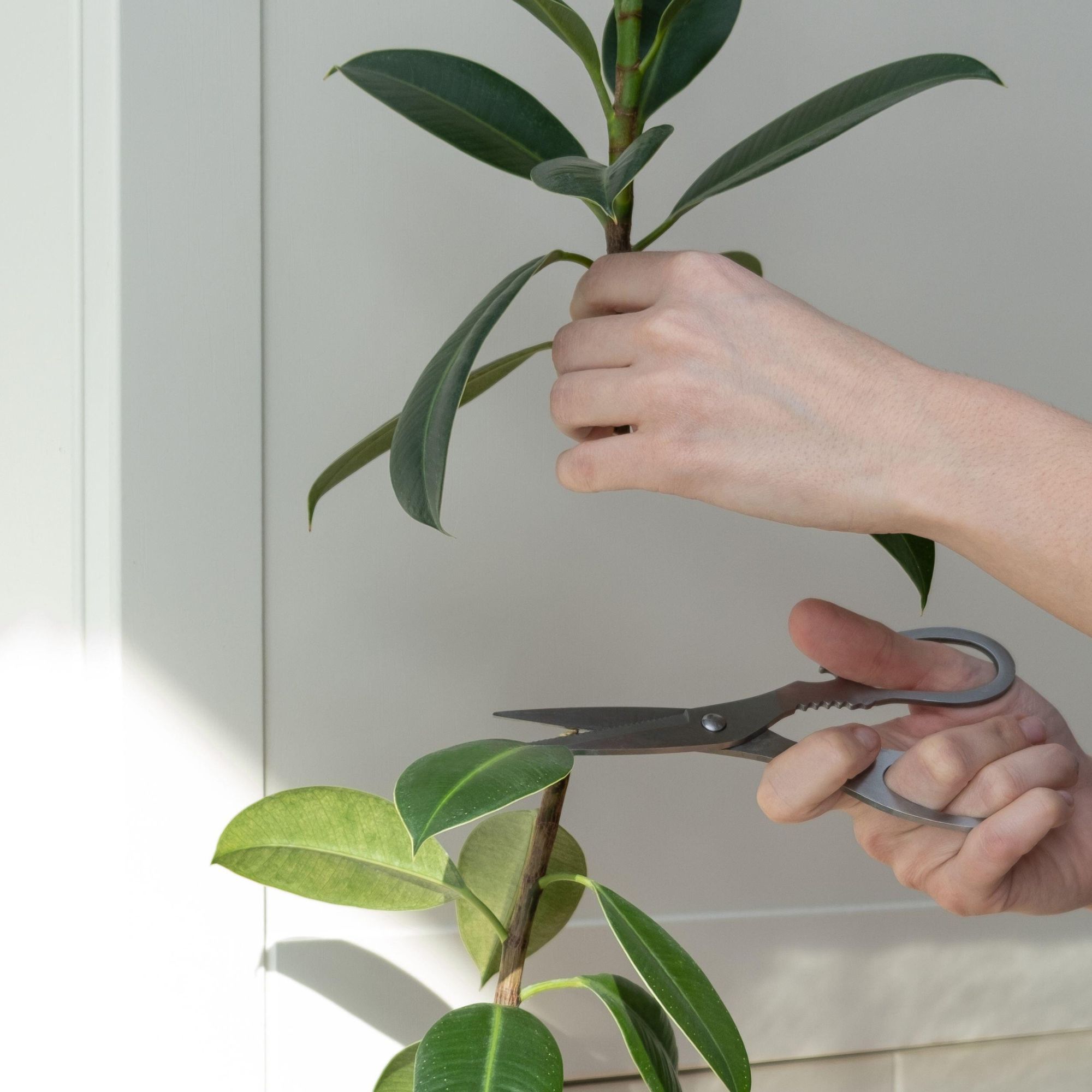Can I grow lavender indoors? Experts reveal the secret to growing lavender inside
Find out how to grow this garden favourite as a beautiful and fragrant houseplant, too


If you enjoy the delicious fragrance of its blooms, you may wonder, can I grow lavender indoors?
The simple answer is that yes, with a bit of love and attention, this enduringly popular garden plant can also add colour and scent to a sunny location in your home.
The method for growing lavender indoors will differ very slightly from that for growing lavender in pots or borders outdoors as the conditions the plant enjoys will be entirely dependent on your actions.
Among the many house plant ideas to try, adding fragrant herbs will only enhance the atmosphere in your home. It is a useful addition to the kitchen and is among one of the best plants for the bedroom helping to relax and lull you into a peaceful sleep.
Whether you choose to grow lavender from seeds or, take lavender cuttings from your garden-grown plants to propagate indoors, by following these expert tips you can enjoy it as a houseplant year-round.
How can I grow lavender indoors?

'Growing lavender indoors holds excellent appeal due to its gorgeous, soothing fragrance, and its uses around the home – in the kitchen add it to desserts, teas, cocktails and more,' says Lucie Bradly, co-owner of Two Wests & Elliott.
In fact, a real lavender plant can be one of the best ways to fragrance your home.
'There are, however, some challenges facing the gardener to successfully grow healthy lavender indoors, and things to take into consideration to ensure you succeed,' Lucie adds.

Lucie has been working at Two Wests & Elliott, providers of greenhouse and gardening products since 1997, originally working alongside the initial founders, Mr and Mrs West, until they retired and is now one of the co-owners.
9 key tips for growing lavender indoors
Below we cover the key points to take into consideration if you're wondering can I grow lavender indoors?
1. Choose the best lavender variety for growing indoors

'There are literally hundreds of lavender varieties to choose from, so ideally when picking one for an indoor plant choose one of the smaller, dwarf varieties that will grow to about 12 inches in height,' advises Lucie.
Some of the best options for growing indoors are:
- Compacta – light purple flowers
- Crystal Lights – a creamy, white flower
- Dwarf Munstead – deep blue flowers
- Little Lottie – pink-purple flowers
- Thumberlina Leigh – dark violet-purple flowers
- Wee One – with short blue flowers, this is the smallest English Lavender
2. Use the right pot

'Lavender thrives in close quarters, so is ideal for growing in a pot. Select a pot that will only be a couple of inches larger than the root ball; if the container is too large there will be compost around the plant where there are no roots, with the potential of this compost staying wet and the roots starting to rot,' advises Lucie.
'Avoid using a plastic or metal pot – these may look attractive, but they will negatively affect the growth of the plants. You are best to choose a terracotta, clay or ceramic pot, which will be sturdy, strong and porous – allowing better airflow to your plants and absorbing water helps prevent your lavender from being in too wet an environment,' she adds.
Lastly, ensure the pot has adequate drainage holes in the base, and you will need a saucer underneath the pot to catch any excess water and prevent any surface on which the pot is placed from being damaged.
3. Select the correct compost

'Lavender is originally a Mediterranean plant and will grow best in a compost that gives good drainage and is slightly gritty,' says Lucie.
If you want to grow lavender indoors, 'you can fill your chosen pot with your own compost mix with a base of good quality potting compost, together with the addition of some cactus compost, horticultural sand, perlite or vermiculite. You could also add clay pebbles or gravel at the base of the pot before you add your compost mix to ensure your lavender doesn’t get root rot,' Lucie says.
'Lavender also likes an alkaline compost (pH between 7 -8); you can achieve this by adding a small amount of lime when mixing your compost. Or, if you like to recycle, you could crush up eggshells and mix them into the top of the compost once a month.'
4. Position your lavender plant in the best spot

'The main thing to consider when thinking about "can I grow lavender indoors?" is the position. The plant must receive at least four hours of direct sunshine every day – as a minimum – and preferably more. Ideally, place your lavender plant on a south-facing windowsill,' advises Julian Palphramand, lead plant buyer from British Garden Centres.
5. Provide adequate air circulation
If you are growing lavender indoors, 'through the summer months, an open window next to or near to the lavender plant will help air circulation and prevent it from drying out or sitting in excess water,' says Julian.
'Avoid direct heat sources – so radiators, fires etc – while at the same time ensuring your lavender gets a degree of air circulation without being exposed to a cold air draught from doors or windows. Achieving this will not only benefit the health of your plant, but you will also gain from the glorious scent drifting throughout your room,' adds Lucie.
6. Cut back foliage when potting

'Whether you have brought a lavender plant in flower or just with foliage, it is important to trim approximately a third of the foliage down so that once planted, the lavender puts all of its energy into creating a good root structure. The fresh foliage and flower will come quite quickly once the root structure is formed in the new pot,' says Julian.
7. Water with care

'Like many plants, lavender flourishes when it receives just the right amount of water. Overwatering – so its roots are constantly sat in wet compost, which can cause them to rot – needs to be avoided, while under watering – specifically allowing the compost to completely dry out for a long length of time – will damage the plant and the lower leaves will start to dry and turn yellow,' says Lucie.
'Very often keeping the level of water correct will mean you only need to water your potted lavender once every couple of weeks – simply use a moisture meter or the finger test to check the moisture in the compost at a depth of about 5 inches – if it is dry then it is time to water.'
When watering, ideally apply the water to the compost rather than over the plant. Indoors the foliage will have less opportunity to dry quickly and if it stays wet this could lead to disease or encourage pests.
8. Feed your indoor lavender plant
All indoor potted plants will be reliant on you to provide the nutrients to keep them healthy.
'Indoor plants have a limited amount of compost to get their nutrients, so you need to feed them regularly,' explains Lucie.
Add a water-soluble plant food once a month to your indoor lavender plant through spring and summer when it is actively growing.
9. Prune and repot

'Once the lavender plant has flowered each year, it can be trimmed down, to approximately a third of the way down the foliage taking all the old flower stalks off,' advises Julian.
Learn when to cut back lavender to ensure the healthiest plant.
'To keep your pots of indoor lavender thriving, try to re-pot it once a year, ' Julian adds.
Growing lavender indoors Q&A
Why is my indoor lavender plant drooping?
If you grow lavender indoors, a key reason why it keeps dying may be due to overwatering.
'The key to maintaining a healthy lavender plant is not to overwater it – they are a Mediterranean, sun-worshipping plant and so prefer to be a little drier than sitting in water,' says Julian Palphramand, lead plant buyer for British Garden Centres.
'Touch the compost to see whether it feels damp and only water if is completely dry. Check once you have watered that the plant is not sitting in a pool of water,' Julian adds.
Can you grow lavender under a grow light?
You can grow lavender under a grow light indoors. 'You can supplement the lighting in your home with some grow lights over your potted plants – which will provide even, full-spectrum light, no matter where the pots are. These types of lights can be cost-effective; you just need a way of suspending them over your plants that is suitable for an indoor setting,' explains Lucie Bradley of Two Wests & Elliott.
Get the Ideal Home Newsletter
Sign up to our newsletter for style and decor inspiration, house makeovers, project advice and more.

Rachel Crow is the editor of Period Living Magazine and a senior content editor, contributing homes and garden content for idealhome.co.uk. She has written for lifestyle magazines for many years, with a particular focus on historic houses, interiors, arts and crafts, and gardening. Rachel started her journalism career on BBC radio, before moving into lifestyle magazines as a freelance writer and editor. She worked on The English Home and The English Garden magazines before joining the Period Living team as features editor and then deputy editor. She was garden editor for Homes & Gardens magazine and homesandgardens.com and contributed articles to Country Homes & Interiors.
-
 Zoe Ball's colourful kitchen island shows how easy it is to create a characterful cooking space - here's how she did it
Zoe Ball's colourful kitchen island shows how easy it is to create a characterful cooking space - here's how she did itBeing brave with colour will reap huge rewards
By Holly Cockburn
-
 7 plants that will make your patio smell gorgeous - the top fragrant picks experts recommend potting up
7 plants that will make your patio smell gorgeous - the top fragrant picks experts recommend potting upFrom aromatic flowers to fragrant herbs
By Kayleigh Dray
-
 I won't gatekeep - Magimix's new small kitchen-friendly mini chopper is my secret to delicious lazy dinners
I won't gatekeep - Magimix's new small kitchen-friendly mini chopper is my secret to delicious lazy dinnersMy homemade pesto pasta has never been better
By Holly Cockburn
-
 Best soil for Monstera – this is the perfect mix for healthy Swiss cheese plants
Best soil for Monstera – this is the perfect mix for healthy Swiss cheese plantsAll the ingredients you should look out for
By Sophie King
-
 How to propagate anthurium – the three best ways to double these pretty tropical plants
How to propagate anthurium – the three best ways to double these pretty tropical plantsWhether you propagate anthurium through cuttings or separation, you'll love these ways to increase your collection
By Holly Reaney
-
 How to care for Anthurium for long-lasting vibrant and tropical colour
How to care for Anthurium for long-lasting vibrant and tropical colourWith their vibrant colours and tropical look, Anthurium andraeanum or Flamingo flowers make for an eye-catching addition to a kitchen, bathroom or conservatory
By Holly Reaney
-
 How to care for spider plants to get the most from this resilient beauty
How to care for spider plants to get the most from this resilient beautyThe retro houseplant is making a comeback – here's how it can thrive
By Holly Reaney
-
 How to propagate a rubber plant - expand your houseplant collection for free
How to propagate a rubber plant - expand your houseplant collection for freeWhy have just one rubber plant when you can have loads?
By Holly Reaney
-
 How to care for a rubber plant – the almost unkillable houseplant
How to care for a rubber plant – the almost unkillable houseplantLow maintenance and fast-growing, the rubber plant is the perfect choice for beginners and ideal for making a statement in a home
By Holly Reaney
-
 How to care for a monstera deliciosa – the gentle giant of the houseplant world
How to care for a monstera deliciosa – the gentle giant of the houseplant worldHow to care for a monstera deliciosa, including where to position, when to water and how to propagate
By Holly Reaney
-
 When to cut back ferns to keep them looking their best
When to cut back ferns to keep them looking their bestLearn when to cut back ferns to keep these hardy garden stalwarts in tip-top condition
By Rachel Crow